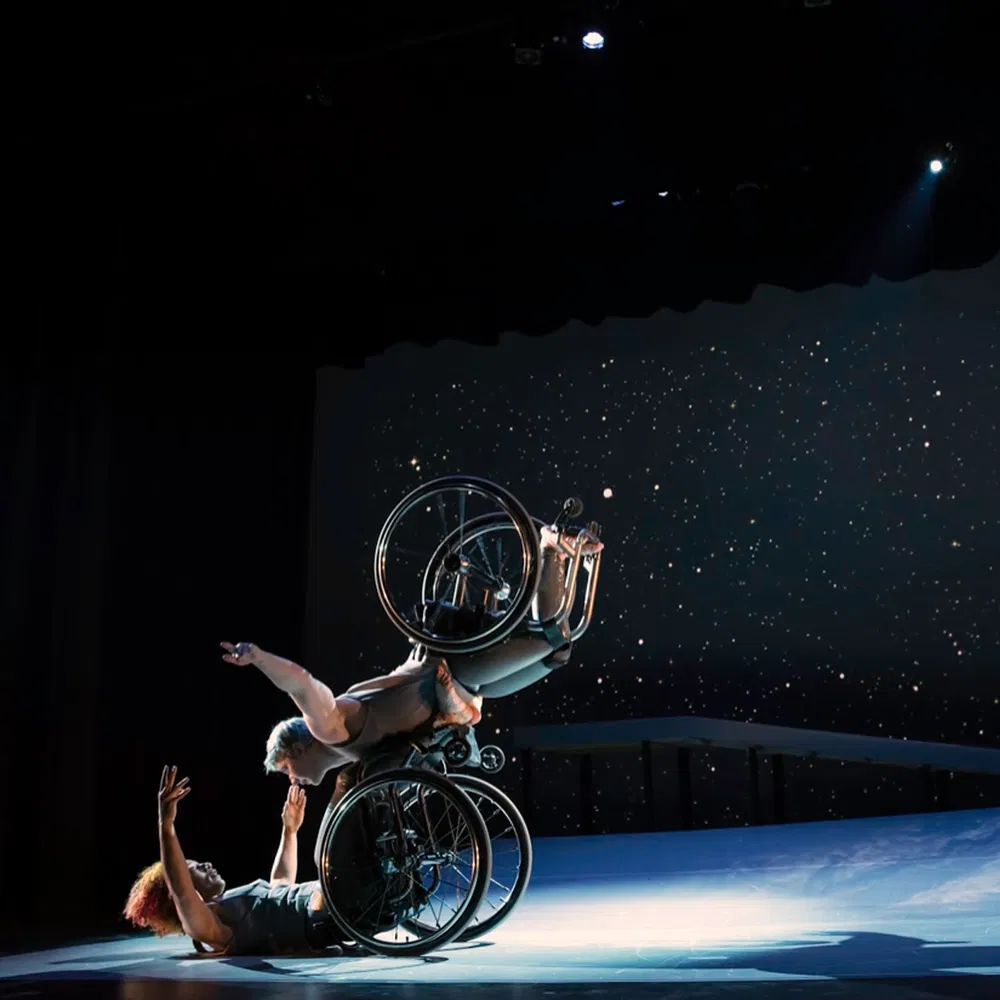History
United States Artists was created in 2006 to support artists and their essential role in society.

Photo of 2024 USA Fellow, choreographer, and dancer Jerron Herman.
Photo by Marcus Middleton.
United States Artists (USA) plays a pivotal role in the nation’s cultural ecosystem, advancing the well-being of artists through unrestricted funding and tailored professional services, amplifying artists’ work, and improving conditions that support their essential roles in society.
United States Artists was founded in response to a 2003 Urban Institute study, which revealed that 96% of Americans valued art in their lives, while only 27% valued artists. Motivated by the study and in response to the NEA’s severe budget cuts, four inspiring leaders of the Ford, Rockefeller, Rasmuson, and Prudential Foundations spearheaded the launch of an organization to illuminate the value of artists to American society and address their economic challenges.
Since our founding in 2005, we have awarded more than 1,000 artists and cultural practitioners with more than $50 million of direct support, including the signature United States Artists Fellowship program and Initiatives partnerships. USA’s nomination-based programs support artists and cultural practitioners across the United States and its territories with $50,000 unrestricted awards. Recipients are honored in all disciplines including Architecture & Design, Craft, Dance, Film, Media, Music, Theater & Performance, Traditional Arts, Visual Art, and Writing. In addition to unrestricted funding, each Fellow receives access to tailored services including financial planning, career consulting, and legal advice, among others.
In 2019, United States Artists began Initiatives, a program area that offers experience, capacity, and methodologies to donors and philanthropies who seek to support artists in specific, focused ways and require research, project design, and management to meet their goals of providing new resources for artists. Currently, USA Initiatives partners with leading philanthropies to offer the Creative Impact Awards, Disability Futures, Knight Arts + Tech Fellowship, Maxwell | Hanrahan Awards in Craft, The Rainin Arts Fellowship, Seed and Bloom: Detroit, and the Wagner Arts Fellowship.
Additionally, informed by an 18-month discovery phase that began in 2024, USA is working with field partners to implement programs that lay the foundation for a new integrated system of artist infrastructure support. This will involve two key programs: Artists Capital Fund that aims to expand artists’ access to non-extractive capital so that they can level irregular income flows, avoid predatory debt, and make investments in their creative work and communities; and National Arts Policy Alliance (NAPA), focused on advancing policy work that supports creative and cultural workers building collective power through local organizing, national coordination, and cross-sector alliances.

Dead Reckoning from DESCENT. Choreographed by Alice Sheppard, in collaboration with dancer Laurel Lawson. New York Live Arts, March 23-25, 2018. Lighting and video by Michael Maag, music by Joan Jeanrenaud.
Photo courtesy of the artist.

2023 USA Fellow and Fiber artist Marques Hanalei Marzan working with coarse coconut fiber rope.
Photo by Jordan Fong.